Sweet, creamy and crunchy, these Orange Tartlets are the perfect little treat for a party, birthday, Holiday dessert table or afternoon tea. These Mini Orange Tarts combine homemade Mini Tartlets Shells and a simple yet flavourful Orange Curd filling.
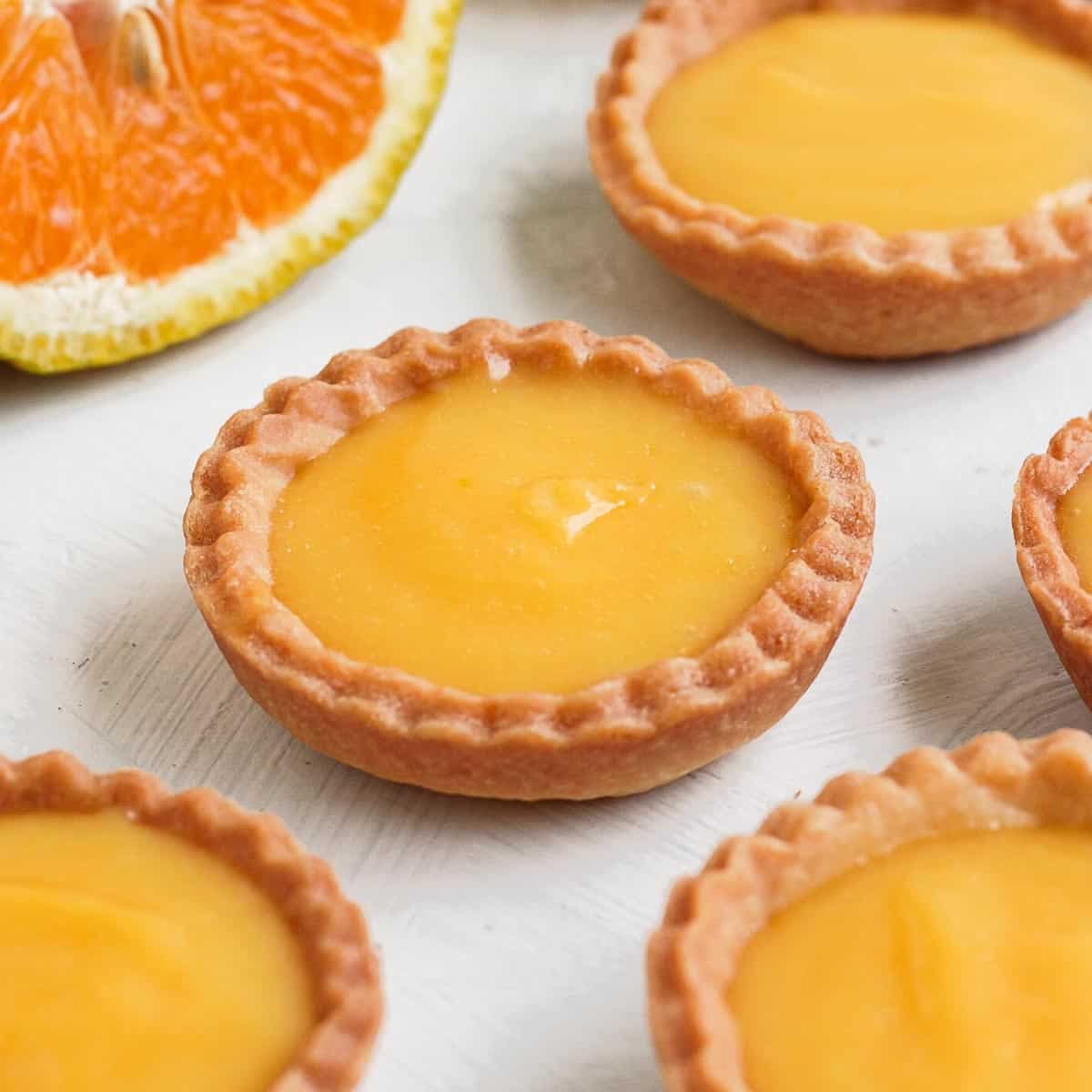
Jump to:
Why we love this recipe
These Orange Tartlets make such a fun and delicious treat that is perfect for parties or afternoon tea. They combine two elements: some homemade mini tart shells baked in a muffin pan and an orange curd filling.
A fun twist on the classic French Lemon Tartlets, these Mini Orange Tarts would make a delicious addition to any festive dessert table, along with these Chocolate Orange Tartlets, Mini Lemon Meringue Tarts and Mini Chocolate Tarts.
Both the crust and the orange cream can be prepared in advance and assembled a few hours before serving. These tartlets are an easier (and smaller) version of my French Orange Tart, but just as packed with flavours!
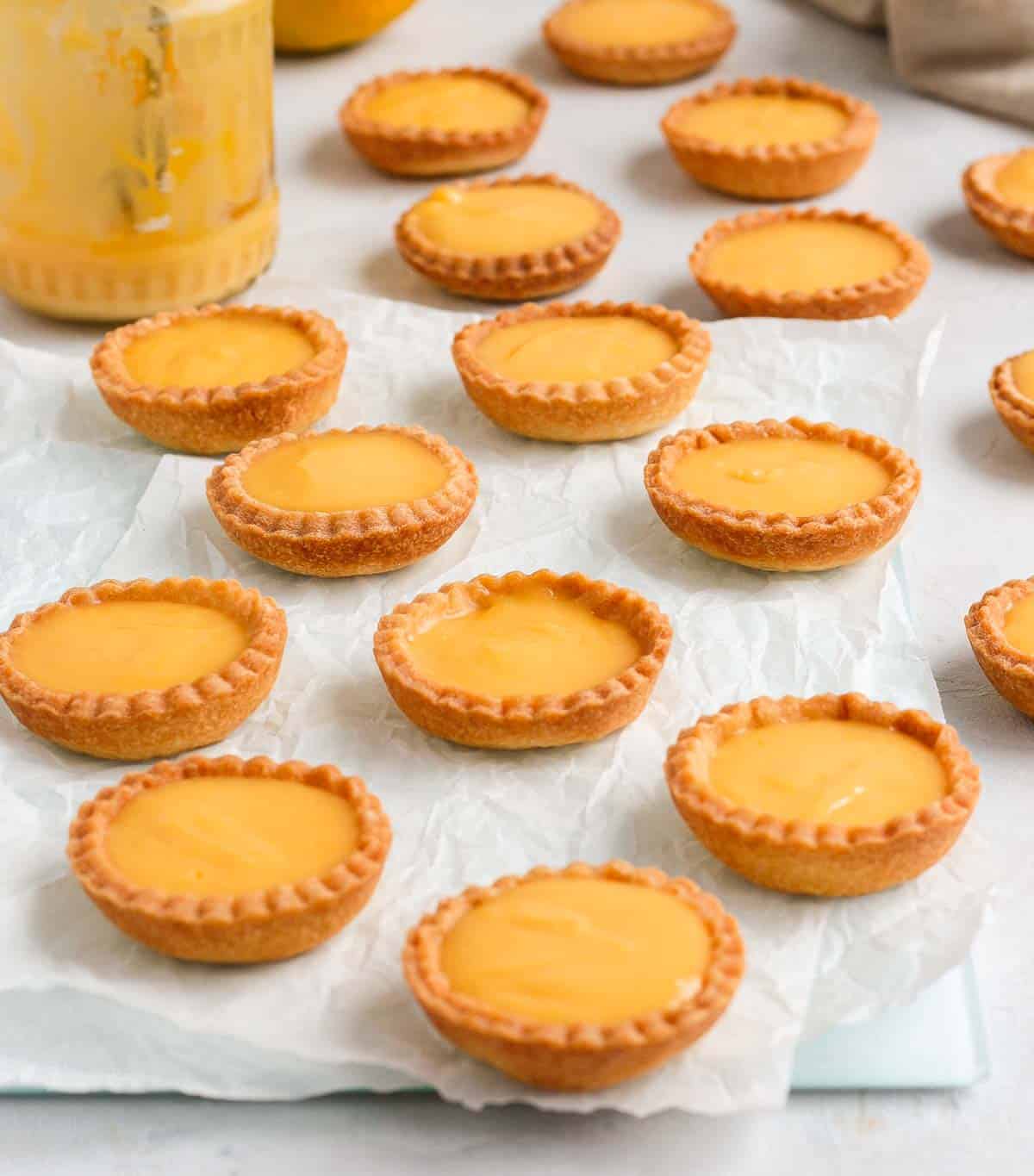
Tartlet Crusts
The first part of the recipe is the tartlet shells. No need for fancy equipment here - I simply use a Muffin Pan and a Cookie Cutter to make the crusts! You can also use a Mini Muffin Pan to create bite-size tartlets.
Ingredients
The pastry I used for these Orange Tartlets is a classic French Pâte Sablée - or butter shortcrust pastry. It is made out of 5 basic ingredients:
- Dry Ingredients: Plain/AP Flour, Salt and Icing Sugar (you can also use Powdered Sugar).
- Wet Ingredients: Unsalted Butter (very cold) and a medium-sized Egg.
Optionally, you could also add some Orange Zest for even more orange flavour!
How to make Mini Tart Shells in a Muffin Pan
I love to make my pastries in the food processor (quicker and less messy!) but you can see how to make them by hands in my Pâte Sablée recipe.
- Photo 1: mix together the Flour, Icing Sugar and Salt in the bowl of your food processor, then add the very cold Butter cut into small cubes.
- Photo 2: pulse until you get very small crumbs (avoid large chunks of butter that will make the pastry more flakey and puff too much in the oven).
- Photo 3 & 4: add the Egg then mix to combine until a rough dough comes together. Try not to overwork the pastry here! If you press some chunks of pastry, they should stick together.
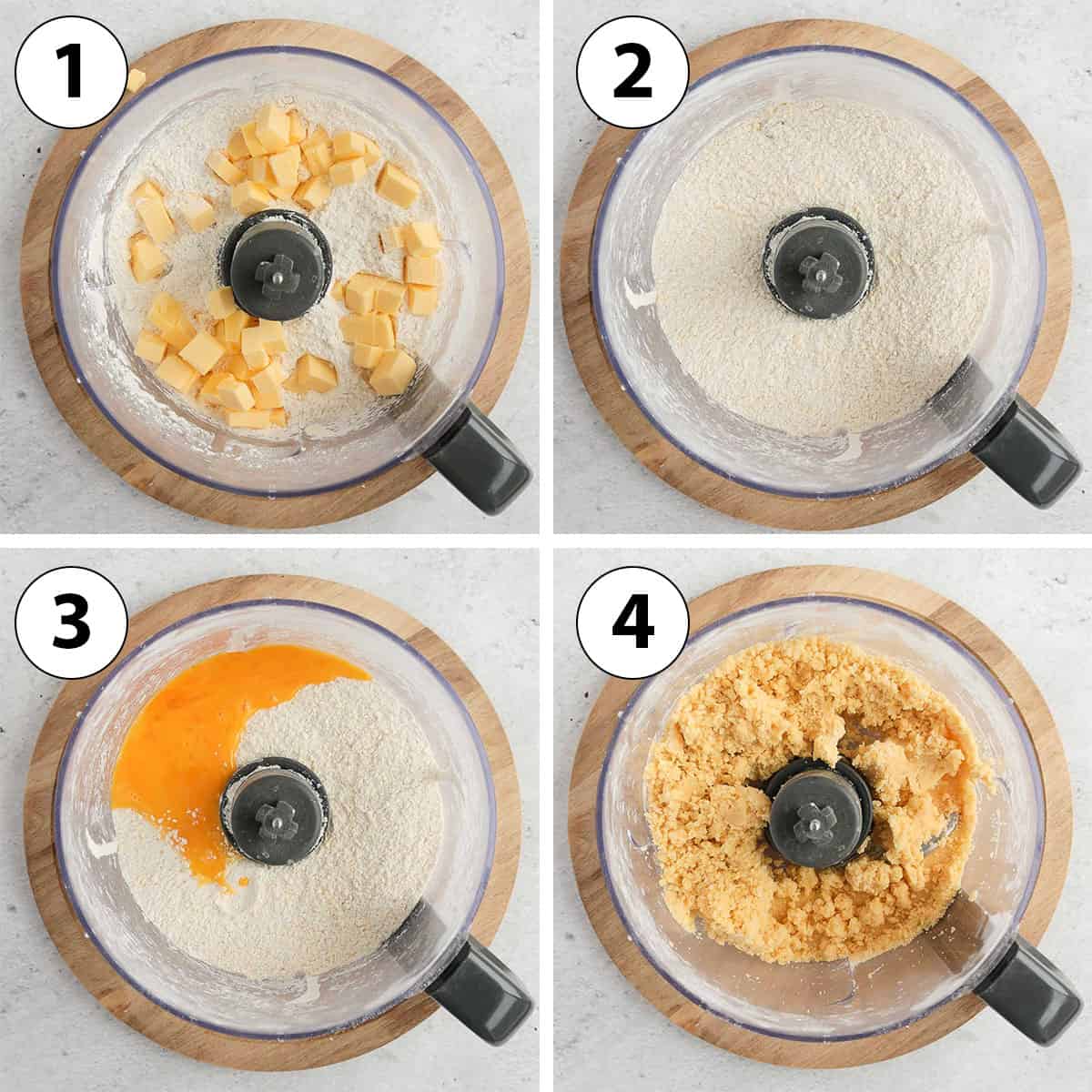
- Tip the pastry on a clean surface and assemble into a large ball. Place between two sheets of baking paper and roll into a large, thin disk - about 3 mm or 1/8 inch thick. Put in the fridge to rest for at least 1 hour, or up to 24 hours.
- Photo 5: take out of the fridge and cut out small disks of pastry with a fluted (or round) cookie cutter. The wider the cut-out pastry, the deeper the tartlets will be. For the best results, they should at least be as wide as the openings of the muffin pan.
- Photo 6: Gently slide each pastry into the muffin pan. Press the bottom of the pastry and run a finger along the edges (and especially the corner between the bottom and the sides) to remove any air bubbles and get the pastry to stick to the muffin pan.
- Photo 7: Dock the pastry (prick the bottom with a fork) then place the muffin pan back in the fridge to rest for at leat 1 hour or up to 24 hours.
- Preheat your oven on 160'C/235'F. While it is preheating, place the muffin pan in the freezer so that the pastry is very cold.
- Photo 8: Cover each pastry shell with a small piece of crunched up baking paper and fill with baking beads, dry beans or rice. Bake for 15 minutes, then remove the paper and weights. Put back in the oven for an additional 15 minutes or until fully baked.
- When cool, take out of the muffin pan and store at room temperature until ready to use.
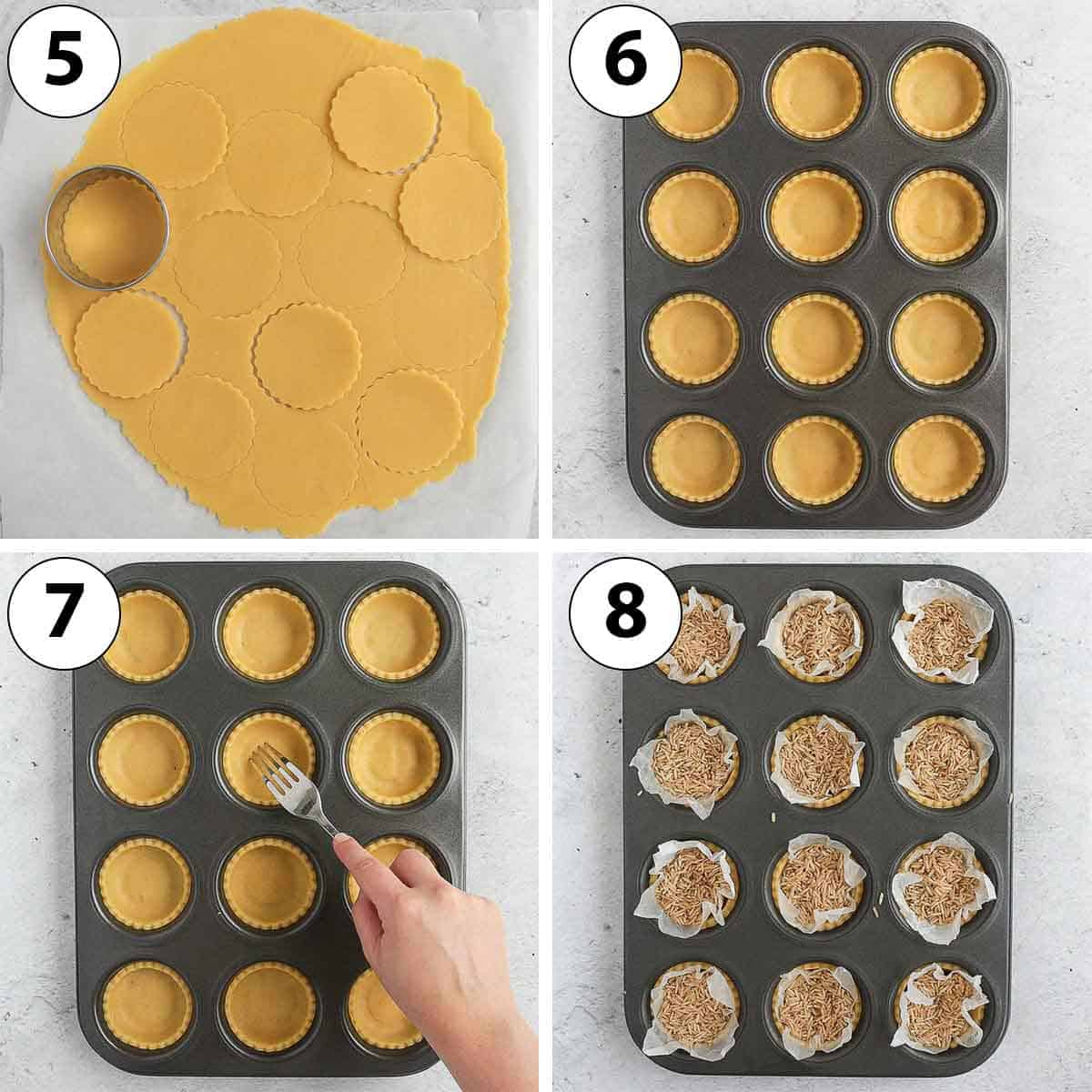
Orange Curd Filling
The second part of the recipe is the preparation of the Orange Curd.
Ingredients
Just like a Lemon Curd, this Orange Curd is made from Orange Juice & Zest, Egg Yolks, Sugar and Butter. To get it slightly thicker, I also used some Cornstarch.
How to make Orange Curd
- Photo 9: Place the Orange Juice, Zest, Egg Yolks, Sugar and Cornstarch in a small saucepan. Turn on very low heat and keep on stirring until the sugar has dissolved and the liquid starts to slightly thicken.
- Photo 10: add the Cubed Butter a little bit at the time (the butter should preferably be at room temperature). Stir until fully melted before adding more and continue until all the butter has been incorporated.
- Photo 11: continue to cook while continuously stirring for a few minutes on low heat (the exact time will depend on the temperature of your stove) until the orange curd has thickened. The curd should never boil to avoid scrambling the eggs, but a very low simmer is fine.
See tips below to know when the orange curd is ready.
- Photo 12: pour the curd through a thin mesh sieve to remove any bits of cooked eggs or lumps.
- Pour the curd into the baked and cooled Tartlet Shells while still warm. Gently tap each tartlet on a hard surface to pop any air bubbles and smooth out the top. Place them in the fridge to set for at least 2 or 3 hours, preferably overnight.
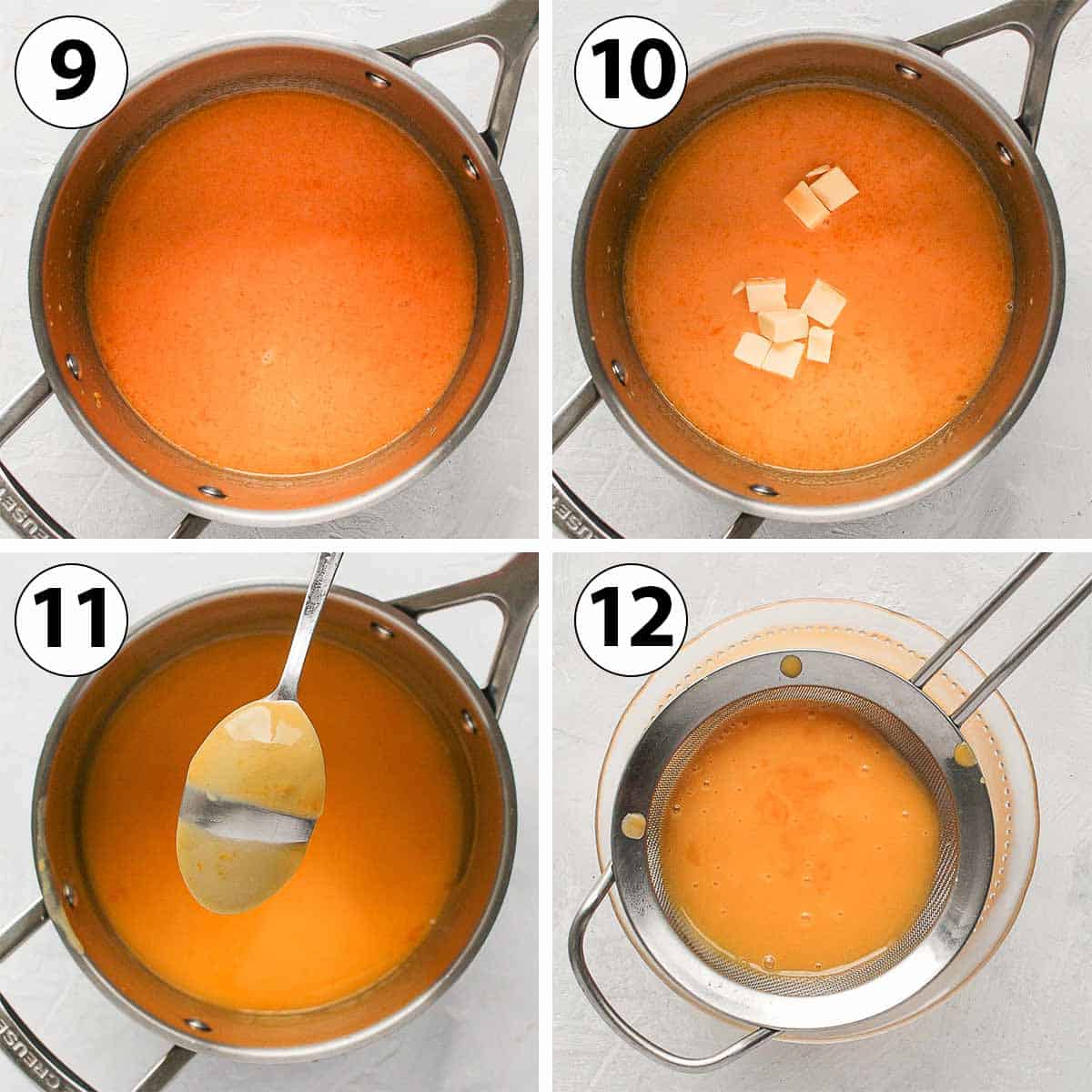
Tips for Success
- Don't skip the resting/chilling time for the pastry - the longer it rests, the best results you will get! This is to allow for the gluten to fully relax and the butter the be very cold, which will insure the shells don't shrink, move or collapse in the oven.
- Always cook a Curd on very low heat to avoid over-cooking the eggs or burning the curd. It will take longer to cook, but the orange curd will be very smooth and without any lumps. Alternatively, the curd can be made in a double-boiler.
- To know the orange curd is cooked: either check its temperature has reached 82'C/180'F (if you have a food thermometer) or check its consistency with a spoon. Dip the back of the spoon in the curd and draw a line with your finger. Tip the spoon down and check if the line remains clear. If some liquid drips over the line, it needs more time. If it stays clear, it's ready.
- If you are making the curd in advance, slightly re-heat it in the microwave to make it more fluid. It will be easier to assemble the orange tartlets when the curd is slightly warm.
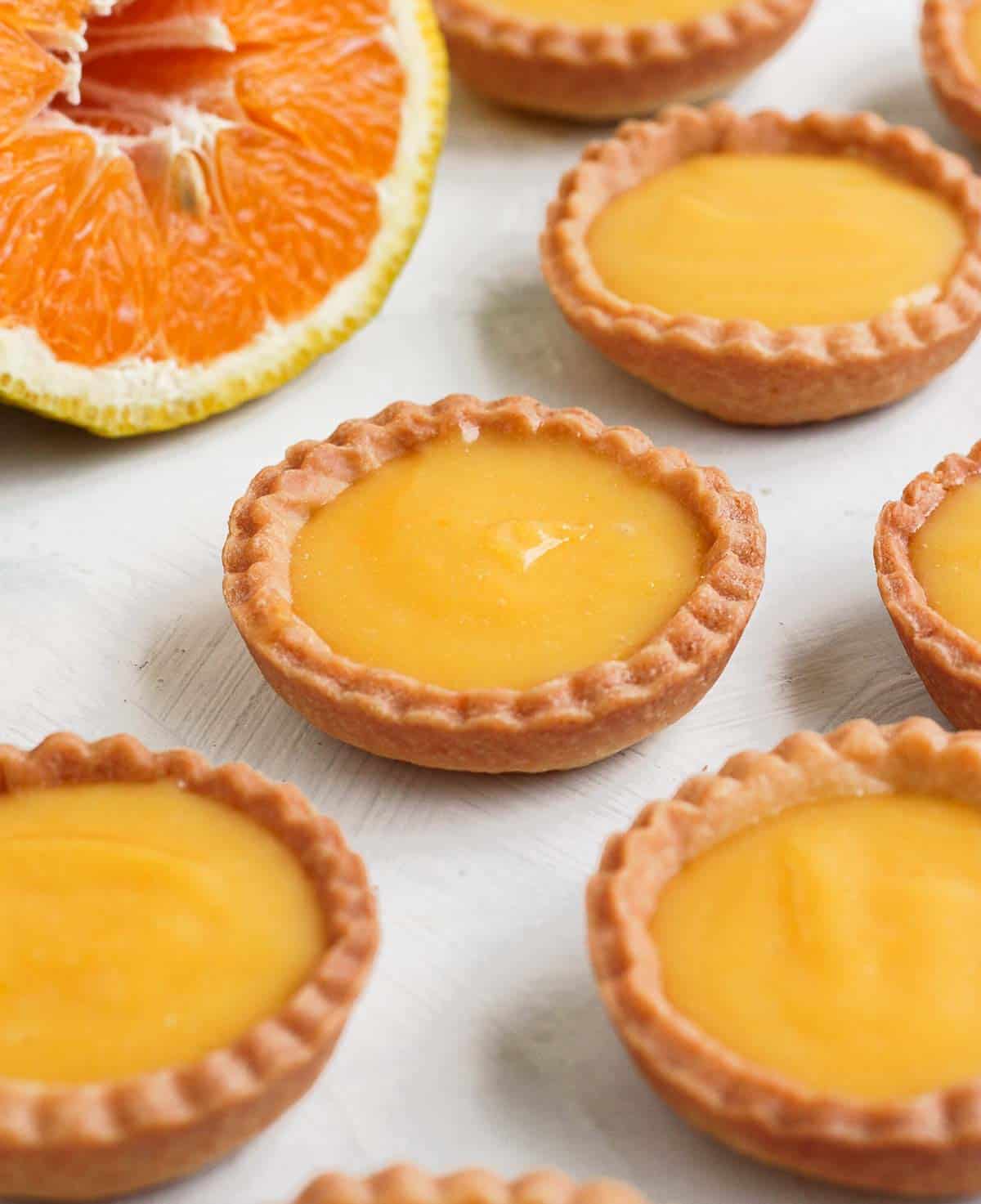
Recipe FAQs
Absolutely, although I always recommend making your own pastry for the best flavours and texture!
Yes, I have made similar tartlets with Lemon (check out this Lemon Curd Tartlet Recipe), but you could absolutely also use a Lime or Mandarin Curd for example! Alternatively, you can also combine a few fruits together like orange and lemon.
Both the Tartlet Shells and the Curd can be made in advance and combined a few hours before serving. Keep the tartlet shells at room temperature for 2 days and the orange curd in the fridge for 3 days.
Slightly heat up the curd to loosen it before filling the tart crusts on the day, and place back in the fridge to set for at least 2 to 3 hours.
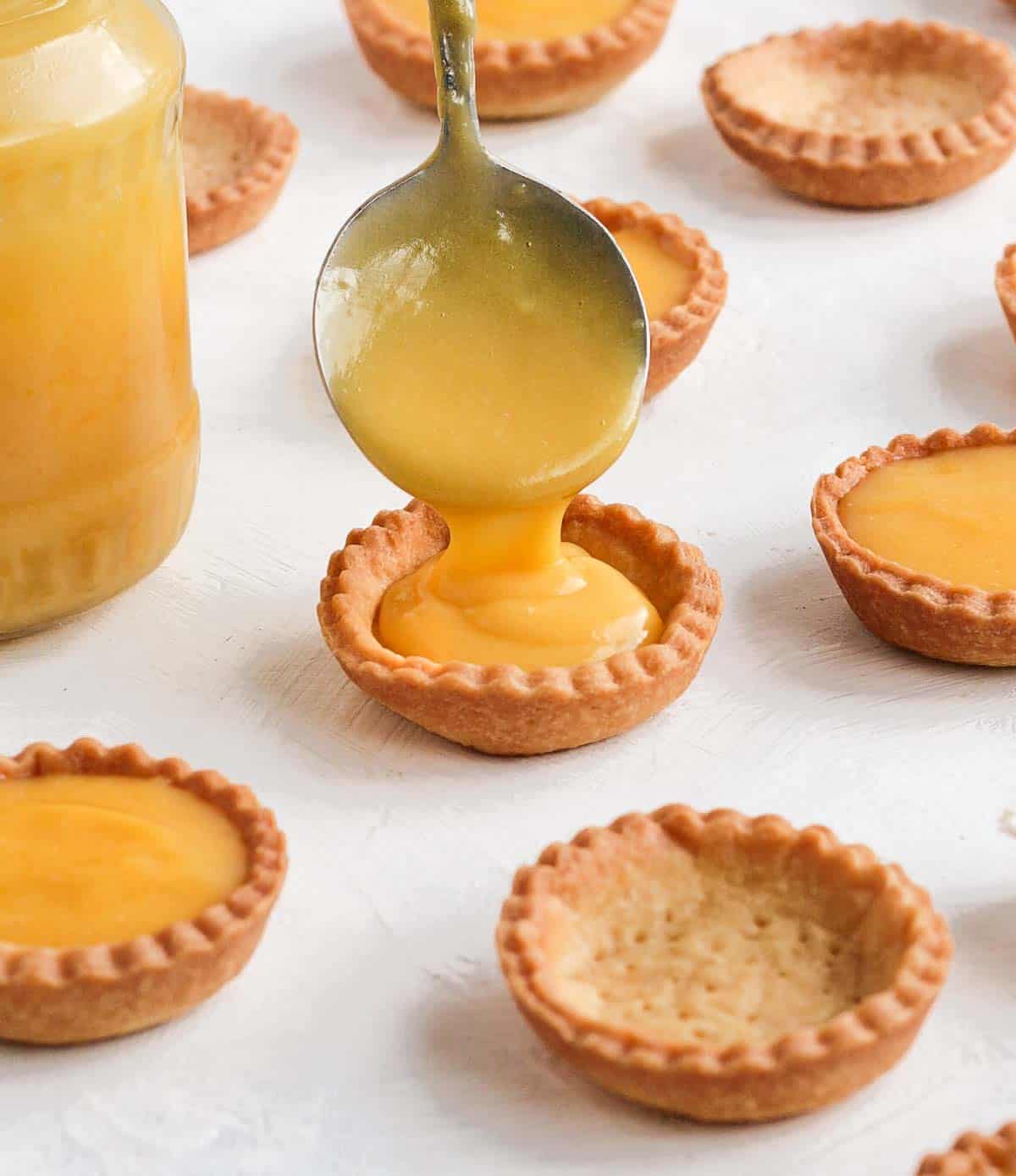
Storing & Freezing
The empty (and baked) tart crusts can be kept at room temperature for up to 2 days and the curd in the fridge for 3 days. Once assembled, the orange tartlets should be kept in the fridge and be eaten within 24 hours for the best flavour/texture, but will last for 2 or 3 days otherwise.
The tartlet crusts can also be made ahead and frozen for up to 3 months, either unbaked (my preferred way of freezing them) or baked. I do not recommend freezing the orange curd filling.

Made this recipe?
Let us know if you liked it by leaving a comment below, and tag us on Instagram @a.baking.journey with a photo of your creation!
Recipe
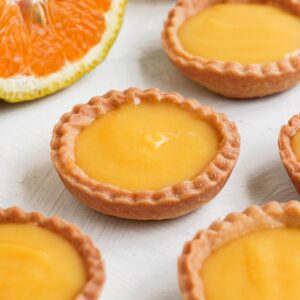
Orange Tartlets
Ingredients
Tartlet Crusts
- 250 gr (1 2/3 cup) Plain / AP Flour
- 50 gr (1/2 cup) Icing Sugar - or powdered sugar
- 1 pinch Table Salt
- 120 gr (1/2 cup) Unsalted Butter - very cold
- 1 Egg
- 1 Orange, Zested - optional
Orange Filling
- 5 Egg Yolks - at room temperature
- 60 gr (1/4 cup) Caster Sugar - or fine white granulated sugar
- 150 ml (1/2 cup + 2 tablesp.) Orange Juice - about 3 large oranges
- 1 Orange Zest
- 1 tablesp. Cornstarch
- 90 gr (6 tablesp.) Unsalted Butter
Disclaimer
I highly recommend using the measurements in grams & ml (instead of cups & spoons) for more accuracy and better results.
Instructions
Tartlet Shells
- Blend together the Flour, Icing Sugar and Salt in your Food Processor (see note 1 if making by hands). Add the very cold Butter cut into small cubes and mix until you get very small crumbs.
- Whisk the egg in a separate bowl and add it to the food processor. Slowly pusle until a dough starts to come together (see note 2).
- Bring the dough together into a ball, place between two sheets of baking paper and roll into a large disk, about 3mm or 1/8inch thick. Place on a flat tray and leave in the fridge to chill and rest for at least 1 hour, or up to 24 hours.
- Take out of the fridge and cut out small rounds of pastry with a round or fluted cookie cutter (see note 3). Gently slide each piece of dough into a muffin pan, pressing on the bottom and the edges to remove any air bubbles that could be trapped under the pastry. Prick the bottom with a fork and place back in the fridge to rest and chill for at least 1 hour, or up to 24 hours.
- Preheat your oven on 160'C/325'F and place the muffin pan in the freezer while the oven is preheating.
- Line each tartlet shells with a small piece of baking paper and fill with baking beads, rice or beans. Bake for 15 minutes, then remove the weights and baking paper and bake for another 15 minutes, or until golden and dry to the touch. Set aside to cool down completely.
Orange Curd Filling
- Place the Orange Juice & Zest, Egg Yolks, Sugar and Cornstarch in a small saucepan. Whisk to combine then turn on very low heat. Keep on stirring until the sugar has dissolved and the liquid starts to slightly thicken (3 to 5 minutes).
- Add the cubed Butter a little bit at the time. Stir until fully melted and combined before adding more butter.
- Continuously stir while the curd continues to cook on low heat for a few minutes (see note 4) until the orange curd has thickened (see note 5). Pour through a thin mesh sieve to remove any lumps.
Assembling the Orange Tartlets
- Pour the warm orange curd into the baked and cooled tartlet shells (see note 6 if making the curd in advance). Gently tap on a hard surface to remove any air bubbles, then place in the fridge to set for at least 2 or 3 hours, preferably overnight.
Tried this recipe? Make sure to leave a comment and star rating below!
Notes
- If you don't have a food processor, you can make the pastry by hands or using a pastry blender. You can find the detailed step by step instructions on how to make the dough by hands here.
- Avoid overworking the pastry by stopping as soon as part of the pastry comes together. To know it is mixed enough, press some lumps of pastry between your hand. If they should stick together, the pastry is ready. If too dry, add a little bit of very cold water. If very sticky, add a little bit more flour.
- The wider you cut out the circles of pastry, the deeper the tartlet shells will be. It is up to you how wide you cut them out, but I recommend having the width of the muffin pan openings as a minimum. Otherwise, the crusts will be quite flat and not deep enough for a filling.
- The exact time will depend on the temperature of your stove, about 5 to 10 minutes. Make sure the curd never boils, but a very gentle simmer is fine.
- To know the orange curd is cooked: either check its temperature has reached 82'C/180'F (if you have a food thermometer) or check its consistency with a spoon. Dip the back of the spoon in the curd and draw a line with your finger. Tip the spoon down and check if the line remains clear. If some liquid drips over the line, it needs more time. If it stays clear, it's ready.
- If the curd has been made in advance and kept in the fridge, slightly warm it up in the microwave before filling the tartlet shells. It will be easier to fill the tarts when the curd is warm and more fluid.


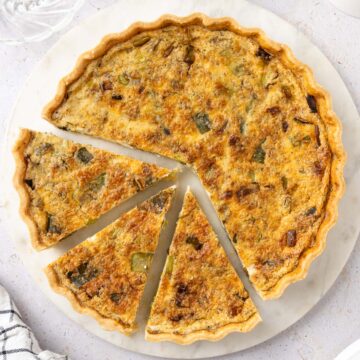
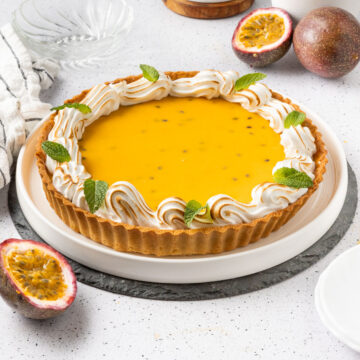
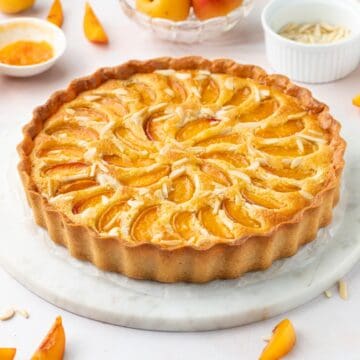

Victoria says
Is it 555 calories per tart??
A Baking Journey says
Hi Victoria, looks like there was a glitch with the recipe card, it's about 200 calories per tart.
Sarah says
What a fun and fresh alternative to traditional lemon tarts! Perfect for morning tea when friends come over 🙂
A Baking Journey says
Thanks Sarah!